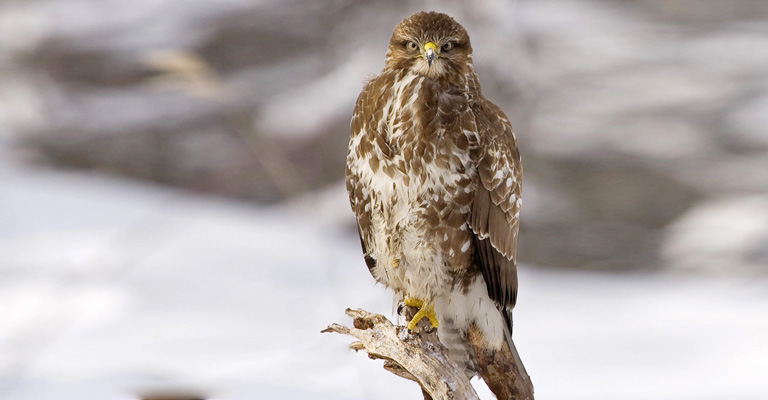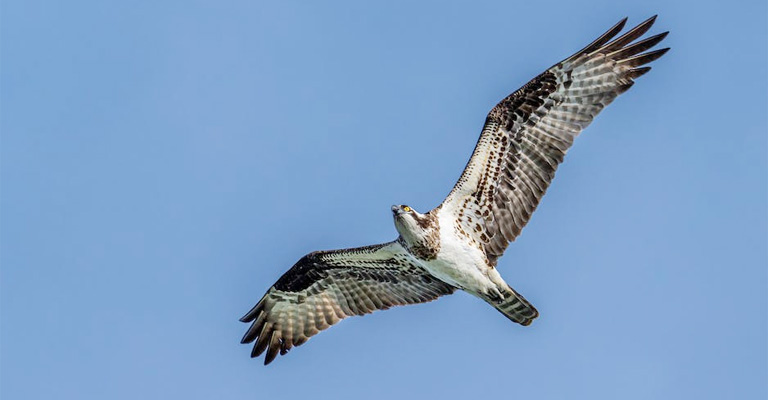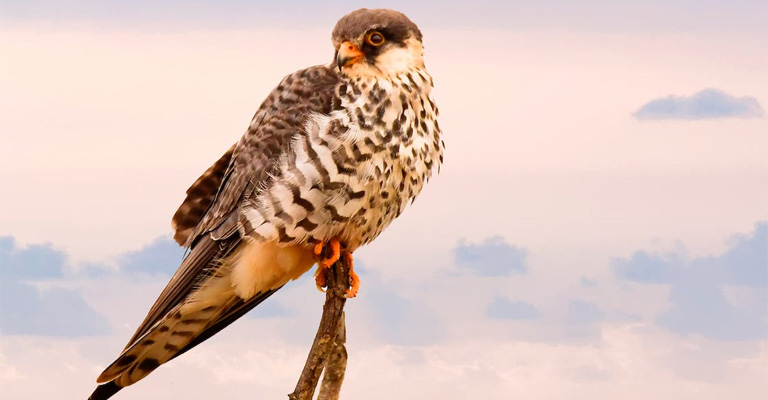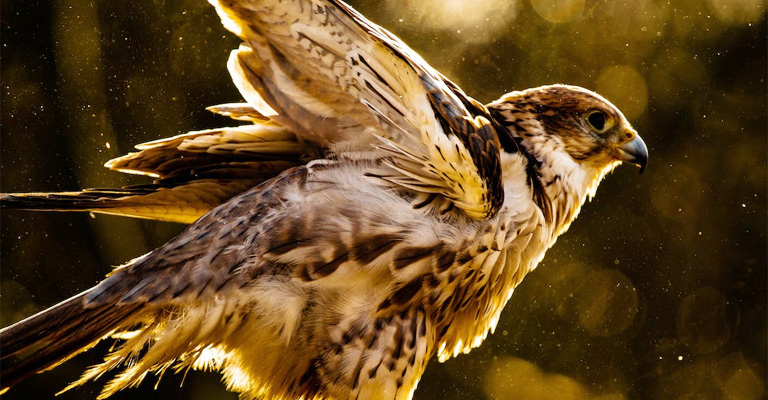As the seasons change and temperatures drop, many bird species embark on remarkable journeys to find more favorable habitats.
Migration is a phenomenon observed in numerous avian species, with some birds traveling vast distances to escape the harsh conditions of their breeding grounds.
When it comes to hawks, these majestic birds of prey are known for their remarkable ability to soar through the skies and their keen hunting skills. But do hawks migrate south for the winter? Let’s find out!

Do Hawks Migrate South for the Winter?
The answer to this question depends on the species of hawk in question. While some hawks do migrate, not all of them undertake long-distance journeys.
Migration patterns vary among different hawk species, and factors such as geography, climate, and food availability play significant roles in determining whether a hawk will migrate or remain in its current location.
In North America, there are several hawk species that exhibit migratory behavior. One of the most well-known migratory hawks is the Broad-winged Hawk (Buteo platypterus). These hawks breed in the northern parts of North America, primarily in Canada and the northeastern United States.
However, during the fall, they undertake an impressive migration to their wintering grounds in Central and South America. The sight of large flocks of Broad-winged Hawks swirling in thermals as they begin their journey south is a remarkable spectacle for birdwatchers.
Another migratory hawk species is the Red-tailed Hawk (Buteo jamaicensis). While some individuals of this species are resident year-round in certain regions, many Red-tailed Hawks from northern parts of North America migrate southward.
They seek out areas with milder climates and more abundant prey during the winter months. These migrations can cover hundreds or even thousands of miles, with some Red-tailed Hawks traveling from Canada to Mexico.
Cooper’s Hawks (Accipiter cooperii) and Sharp-shinned Hawks (Accipiter striatus) are two smaller hawk species that also exhibit migratory behavior. These hawks breed in the northern parts of North America and migrate south for the winter.
Do All Hawks Migrate?

No, not all hawks migrate. The migration behavior of hawks varies among species, and some hawks are migratory while others are non-migratory or only partially migratory. Here are a few examples:
Migratory Hawks
Some hawk species are known for their long-distance migrations. They undertake seasonal movements, often over hundreds or even thousands of miles, to take advantage of favorable feeding and breeding grounds.
For instance, the Broad-winged Hawk (Buteo platypterus) is a neotropical migrant, traveling from North America to Central and South America during the winter.
Non-Migratory Hawks
Certain hawk species are resident birds, meaning they do not migrate and remain in their breeding territories year-round. Red-tailed Hawks (Buteo jamaicensis) is an example of non-migratory hawks. They establish and defend territories throughout the year and do not undertake extensive migrations.
Partially Migratory Hawks
Some hawk species exhibit partial migration, where only a portion of the population migrates while others stay in their breeding areas. This behavior can vary depending on factors such as food availability or climatic conditions.
The Rough-legged Hawk (Buteo lagopus) is an example of a partially migratory hawk. In North America, individuals from the northern breeding areas tend to migrate south during winter, while those from more southern regions may remain resident.
It’s important to note that the extent and patterns of migration can also vary within species, as individual hawks may exhibit different migratory behaviors based on factors such as age, sex, or environmental conditions.
Why Do Hawks Migrate?

Hawks, like many other bird species, migrate for a combination of reasons that are influenced by factors such as food availability, breeding success, climate, and competition. Here are some key reasons why hawks migrate:
Food Availability
Hawks are predatory birds that primarily feed on small mammals, birds, and reptiles. Migration allows them to follow their prey, which may become scarce in their breeding grounds during the winter months.
By migrating to areas with more abundant food sources, hawks can increase their chances of survival and maintain their energy levels.
Seasonal Breeding Grounds
Some hawk species migrate to specific regions for breeding purposes. These breeding grounds provide optimal conditions for courtship, nest building, and rearing of offspring.
Factors such as longer daylight hours, suitable temperatures, and available nesting sites play a role in attracting hawks to these areas. Migrating to breeding grounds with abundant prey resources also ensures the availability of food for the growing chicks.
Climate and Weather
Hawks migrate to escape harsh climates and adverse weather conditions. Cold temperatures, snow cover, and reduced prey availability can make it challenging for hawks to survive and find enough food in their breeding territories during winter.
By migrating to regions with milder climates, hawks can find more favorable conditions and a higher abundance of prey.
Reducing Competition
Hawks may migrate to avoid competition with other hawks or bird species. Breeding areas can become crowded, with limited resources available.
By migrating to different regions, hawks can reduce competition for territories, food, and mates, increasing their chances of successful breeding and survival.
Avoiding Predators
Migration can also help hawks avoid predation, especially by other raptors. By moving to different areas, hawks can minimize encounters with larger predators or competitors, reducing the risk of territorial conflicts or predation on themselves or their young.
It is important to note that not all hawk species migrate. Some hawks are residents, meaning they remain in their breeding territories year-round if suitable conditions and resources are available.
The decision to migrate or remain resident depends on a combination of genetic programming, environmental cues, and individual circumstances within each hawk species.
Migration allows hawks to adapt to changing environmental conditions and maintain their survival and reproductive success.
How Do They Know When to Go?

The exact mechanisms by which hawks and other migratory birds know when to go and initiate their migration are still not fully understood.
However, several factors and cues likely play a role in guiding their timing. Here are some key ways through which hawks may determine when to start their migration:
Internal Biological Clock
Birds possess an internal biological clock, often referred to as circannual rhythms. These rhythms are influenced by changes in daylight duration, which vary predictably with the seasons.
As the days grow shorter during the fall, the biological clock of hawks triggers physiological changes that initiate the migratory process. These changes may include increased fat storage, hormonal shifts, and behavioral preparations for migration.
Photoperiod (Day Length)
Day length or photoperiod is an important cue for hawks and other migratory birds. As autumn approaches, the days become shorter. Decreasing daylight acts as a signal for hawks to start preparing for migration.
The changing ratio of light and darkness helps trigger the physiological and behavioral changes necessary for a successful migration.
Environmental Cues
Hawks are sensitive to environmental cues that indicate changing conditions. They may respond to variations in temperature, weather patterns, and food availability.
For example, a decrease in temperature or the depletion of their prey populations could serve as indicators that it is time to start the migration journey to more favorable habitats.
Social Interactions
Observations suggest that hawks may engage in social interactions and group behaviors before migration. They may congregate in large numbers at specific sites known as migratory staging areas, where individuals gather and wait for favorable weather conditions.
These social interactions may provide hawks with important cues and signals that trigger migration and coordinate their departure.
Wind and Weather Patterns
Hawks are known to be sensitive to wind and weather patterns. They often rely on favorable wind conditions to aid their flight during migration.
Hawks may wait for specific wind patterns, such as tailwinds, that can assist them in conserving energy and facilitating their long-distance journeys.
How Do Hawks Navigate at Night?

Hawks are diurnal birds, which means they are primarily active during the day. While they have excellent eyesight and rely heavily on visual cues to navigate and hunt, their ability to navigate at night is limited compared to nocturnal birds such as owls.
However, there are a few factors that can help hawks navigate in low-light conditions:
Moonlight
Hawks, like many other birds, can utilize moonlight to some extent for navigation. A bright moon can provide enough illumination for them to see and navigate their surroundings.
Familiarity with Territory
Hawks are territorial birds and often have well-established home ranges. They become familiar with their hunting grounds during the day, memorizing landmarks and using them as reference points at night.
Keen Hearing
Although not as acute as nocturnal birds, hawks have relatively good hearing. They can listen for sounds made by prey or other birds and use them to locate their position or potential food sources.
Star Navigation
Some studies suggest that certain bird species, including hawks, may use the stars as a reference for navigation, particularly during migration. They can recognize and use patterns of stars to orient themselves in the right direction.
FAQs
Hawks, like many migratory birds, rely on a combination of instinct, visual cues, and celestial navigation to navigate during migration. They have an innate sense of direction and can also use landmarks, such as mountains and coastlines, to guide their way.
The distance that migrating hawks travel varies depending on the species and their breeding location. Some hawks undertake relatively short migrations of a few hundred miles, while others travel thousands of miles.
For example, the Broad-winged Hawk can migrate up to 4,500 miles from its breeding grounds in North America to its wintering grounds in Central and South America.
Hawk migration generally occurs in the fall and spring. Fall migration is triggered by factors such as decreasing daylight hours and the availability of food. Hawks start their journey southward to their wintering grounds during the late summer or early fall.
No, not all hawks migrate at the same time. Different hawk species have varying migration schedules, and even within a species, individuals may migrate at slightly different times. Migration timing can depend on factors such as age, sex, breeding success, and weather conditions.
Generally, larger hawks, like the Broad-winged Hawk, migrate earlier in the fall, while smaller hawks, such as the Cooper’s Hawk and Sharp-shinned Hawk, may migrate slightly later.
Hawks face several challenges during migration that can put them at risk. One significant threat is habitat loss along their migration routes, which can disrupt their journey and limit their access to food and resting areas. Collisions with buildings and other human-made structures are also a concern.
Final Words
So, do hawk migrate south for the winter? While not all hawk species migrate south for the winter, many of them do undertake remarkable journeys to find more favorable conditions and food sources. The migratory behavior of hawks is influenced by factors such as breeding location, climate, and prey availability.
Species like the Broad-winged Hawk, Red-tailed Hawk, Cooper’s Hawk, and Sharp-shinned Hawk are known to migrate long distances, while others, like the Red-shouldered Hawk, may remain resident if their habitats provide sufficient resources.